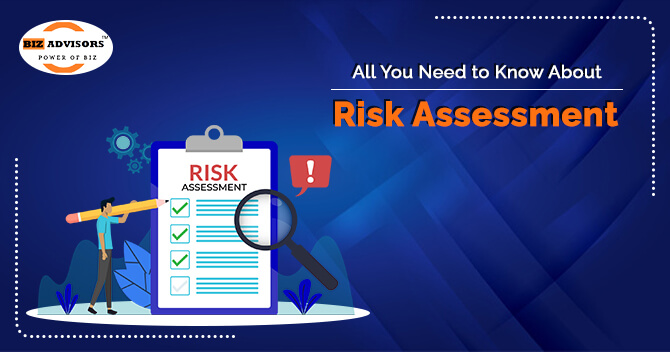Risk Assessment refers to a comprehensive analysis of the subject matter concerning environmental disasters and their profound impact on human society on a wide platform. Risk Assessment imparts an explicit evaluation of the factors that contribute to the origin of environmental disasters on a broad scale. It includes analyzing, scrutinizing, identifying, and enforcing the standards in the context of safeguarding the essential resources of the environment. It aims at maintaining environmental sustainability. Risk Assessment emphasizes the intrinsic management of environmental harms and also focuses on creating a vibrant ecological functioning. It forms a substratum for a convalescing environment to a more significant extent and also provides instantaneous support in determining the efficacious framework of environmental justice. In this blog post, you will learn about the basics of Risk Assessment in a detailed format.
Risk Assessment
Identification and evaluation of the risks that participants in the intended project and nearby populations experience as a result of hazard occurrence are part of the risk assessment process. This demands a deep study of failure probability, credible accident scenarios, population susceptibility, etc. As a result, risk analysis is typically restricted to considering the worst-case catastrophe scenario and potential effects of environmental threats on human health.
Correct handling, training, and protocol adherence can greatly reduce these accidents. Therefore, obtaining zero risk or complete safety could be difficult. When such events occur, swift action must be done to control the situation to prevent loss of life and property damage. An extensive review of the risks is followed by an assessment. It comprises determining and evaluating the risks that the presence of hazards poses to the individuals nearby.
The function of Risk Assessment
Risk is the possibility of some mishaps involving an event or series of occurrences.
The themes covered by the Risk Assessment research include:
· Recognizing potential hazard regions, recognizing typical failure occurrences;
· Imagining the fire and explosion that would occur in the ensuing scenarios;
· Assessing the potential for overall damage from the identified hazardous occurrences and the impact zones brought on by the unintentional scenarios;
· Describe ways to prevent the worst-case mishap scenarios.
· Creating a disaster management plan;
· Creation of an occupational and health safety plan as part of an emergency plan
Essential Documentation for Risk Assessment
It is crucial to keep track of the Risk Assessment and control measures taken. Evaluations may need to be kept for a specific amount of years.
· Jeopardy relating to entrepreneurial practices
· Types of Risk
· The level of risk (include a summary description of what each level means)
· Regulations, guidelines, and policies that have been put in place
· Date Verification finished Further curbing measures is necessary
· Follow-up (include date)
Need for Risk Assessment
These are the requirements of the Risk Assessment:
· Manufacturer information and documentation on the product.
· Experience from prior employment (knowledge from workers, etc.).
· Relevant standards and statutory requirements.
· Standards of behavior and industry best practices.
· Safety data sheets (SDSs), academic papers, or other manufacturer materials are examples of information connected to hazards in health and safety.
· Information from reliable sources.
· Testing results (atmospheric or air workplace sampling, biological swabs, etc.).
· Professional competence in workplace health and safety.
· Incidents report, near-misses, past illnesses, injuries, etc.
· Observation of a task or process.
· Working status (outlet, situation, etc.).
· The systems for work that are in use.
· The diversity of outcomes that could occur.
· How the source might cause harm (e.g., inhalation, ingestion, etc.).
· The amount and how frequently someone will be exposed.
· Relationship, proficiency, expertise, and experience of the workers doing the task.
Procedure
Always perform evaluations with a thorough working knowledge of the problem by a qualified person or team. Include supervisors in the process since they are the ones who know the business the best.
Typically, when doing an evaluation, you should:
· Identify any possible threats.
· Calculate the chance and magnitude of the injury, such as an accident or illness.
· Incorporate both normal operating conditions and exceptional incidents, such as repairs, closures, power outages, emergencies, severe weather, etc.
· Examine all available health and safety information about the hazard, including Safety Data Sheets (SDS), manufacturer literature, information from reliable organizations, testing results, workplace inspection reports, records of workplace incidents (accidents), including information about the type and frequency of the occurrence, illnesses, injuries, near misses, and so forth.
· Find out what minimum laws are required by your jurisdiction.
· Using the risk control hierarchy, ascertain the actions required to get rid of or control the hazard.
· Verify that the risk is effectively handled or that the danger has been removed.
· To make sure the control is still effective, monitor the situation carefully.
· Keep any necessary documentation or records. A description of the process followed to evaluate the risk, a summary of any evaluations, and an explanation of how conclusions were made can all be found in the documentation.
Note: The following considerations should be made when conducting an assessment:
· Exposure of current and potential employees (e.g., the number of employees who may be exposed, the kind and frequency of that exposure).
· Engineering controls, workplace practices, hygiene standards, and infrastructure are needed to limit this exposure.
· The frequency and duration of the task (how long and how often a task is done).
· A location where work is finished.
· The tools, materials, and other resources employed in the process and how they are used (e.g., the physical state of a chemical or lifting heavy loads for a distance).
· Whether the task might have an impact on others, any linkages it might have with other local activities (e.g., cleaners, visitors, etc.).
· Duration of the procedure, good, or service (e.g., design, construction, uses, decommissioning).
· The staff members’ acquired knowledge and skills.
· In what circumstances a person would act (e.g., what would be the most common reaction by a person if the machine failed or malfunctioned)
Conclusion
The aforementioned text imparts an unambiguous picture concerning Risk Assessment in a well-organized format. Risk Assessment helps in analyzing the risk constituents to environmental health and tries to reduce the harmful effect of hazardous activities on a wide scale. Risk Assessment accentuates the guidelines to study in depth the disasters which tend to violate environmental sustainability[1] to a larger extent. Our legal luminaries at BizAdvisors.io provide a robust support system in the context of assisting individuals to easily get access to the ideal structural paradigm of Risk Assessment. You can freely contact our legal consultants at BizAdvisors.io for any kind of professional advice or support in the context of the structural framework of Risk Assessment.
Read our article:A Complete Overview of Half-Yearly Environmental Compliance
 9559179325
9559179325 9559179325
9559179325





